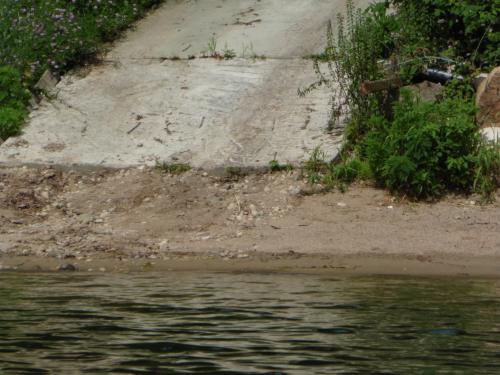What can you do to help protect your lake?
Environmentally-friendly behaviors contribute to healthy watersheds.

We often take for granted the plentiful and varied water resources that exist in Michigan. Did you know that nearly all waterways in Michigan eventually flow into the Great Lakes? Would you be surprised to learn that our actions on the landscape – even seemingly far away from a lake or river - can dramatically affect water quality? This is because everyone lives in a watershed, also called a catchment or drainage basin, the area of land that drains to a particular body of water such as a river, lake or stream. Importantly, a watershed includes water above, surface water, and below the earth’s surface, groundwater.
Watershed boundaries or drainage divides are the high points in the landscape. A watershed catches precipitation and water runoff from its land area and funnels it to a particular body of water. Every lake in Michigan has a watershed – the area of land that drains into it. The watershed area may be very small, for example, a small lake with no inlets, or quite large, such as a large lake fed by a stream or river.
A healthy watershed contributes to biodiversity that supports a natural lake ecosystem. Lake water quality is directly affected by the water that flows into it from its entire watershed. Here are some human activities that can have watershed-wide effects on the thousands of inland lakes in Michigan:
- If applied improperly (wrong type, time or amount), fertilizers and pesticides can run off the land and end up in inland lakes, harming fish and wildlife and reducing water quality. Excess nutrients from fertilizers applied to lawns and farms in the watershed may also run off, leading to unwanted excess aquatic plant and algae growth that hinders recreation and can harm lakes. Be sure to follow application labels for fertilizers and pesticides carefully to avoid excess applications, and never apply chemicals to your lawn and gardens prior to rainfall. Always sweep up excess fertilizer off paved surfaces to ensure fertilizer is not washed off roads and sidewalks and into nearby lakes.
- Nutrient-containing sediment can contribute pollutants to lakes. Install native vegetation along shorelines to help filter contaminants, keep soil in place, and protect lake health.
- Failed or improperly maintained septic systems can contribute harmful nutrients and pathogens that are dangerous to lake water quality and human health. Be sure to have our system regularly inspected and pumped out every three to five years.
- Failing to pick up after pets can also impact water quality by introducing harmful bacteria and other pathogens into lakes and potentially harming human health. Be sure to pick up after your pets and deposit waste in the trash.
- Washing your car on paved driveways or parking lots allows oil, fuel, and soap to make their way into lakes. Instead, wash your car on the lawn or take your car to a commercial car wash.

A healthy watershed is vital to protecting the water quality and health of a lake. The next time you go for a drive or a float around your favorite lake, observe the various land uses around your lake which can potentially impact your lake’s health. How are homeowners maintaining their property? Are there farms, industries, or roads that may be contributing pollutants to your lake? Are there septic systems in the area that have failed? Have you observed illegally dumped garbage around your lake? Most importantly, think about how your own actions might be impacting your favorite lake. With a little work, we can all help make a difference in protecting Michigan’s lakes and their watersheds.
For more information on promoting healthy watersheds, the U.S. Environmental Protection Agency offers a Healthy Watersheds Program.
Michigan State University Extension Educator, Terry Gibb, has developed a helpful clean water checklist which gives practical advice on how to protect lake health.



 Print
Print Email
Email




